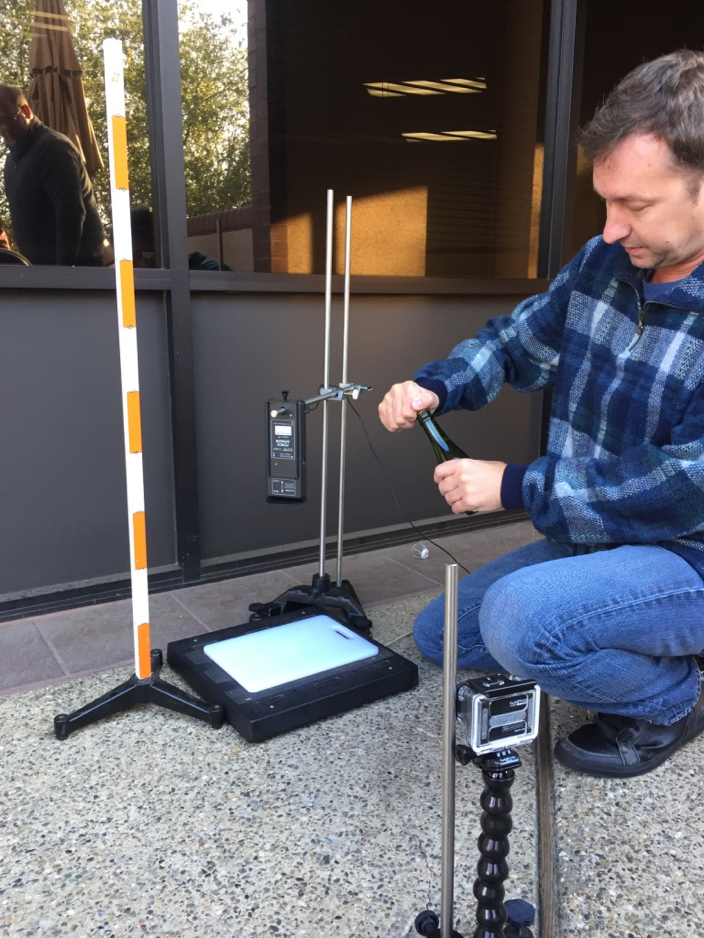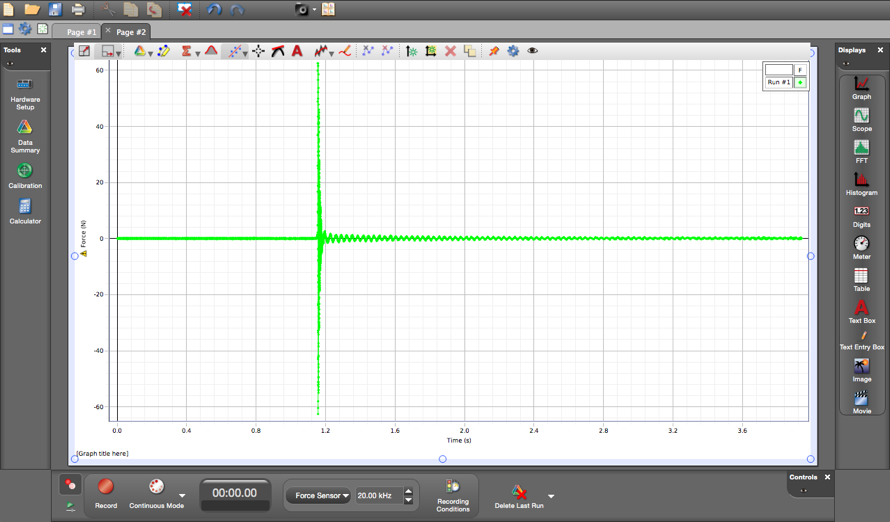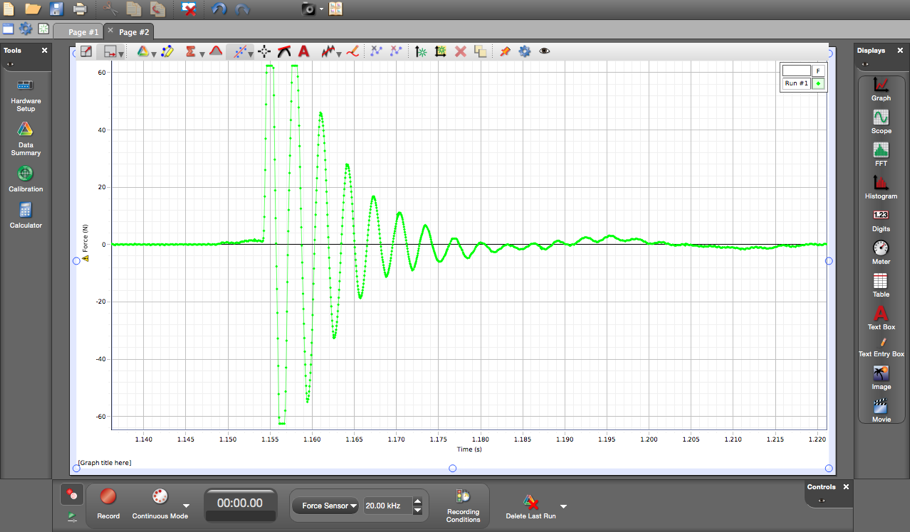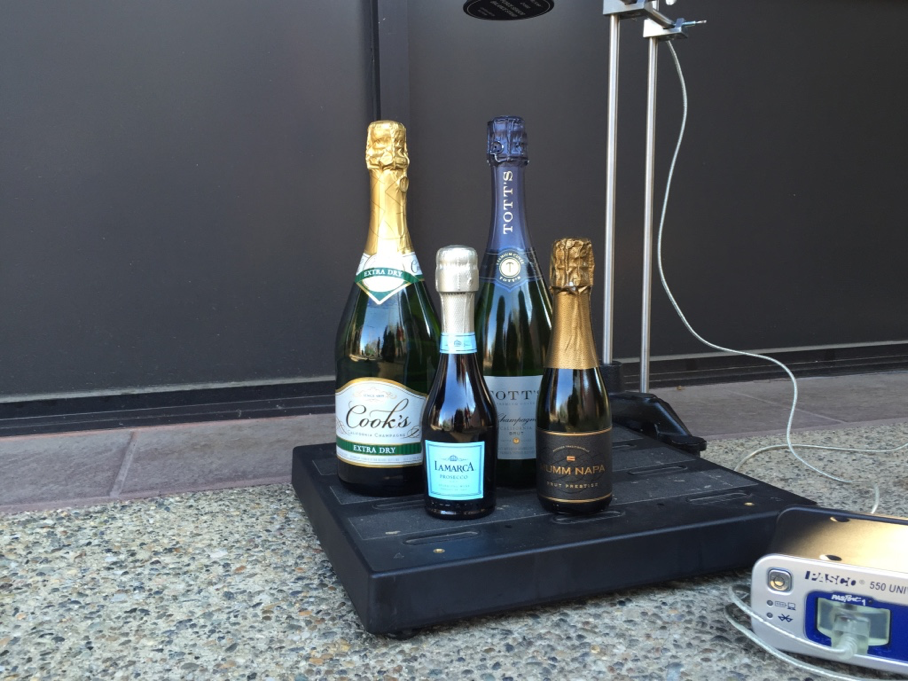An Open Bottle for Inquiry on New Year's
It’s New Year’s Eve, and with any luck, soon the music and Champagne bottles will be poppin’. Not only it is an opportunity to raise a glass in toast, it is also raises an interesting science question:
How can we measure the force of the “pop” of the cork of a Champagne bottle? Or, more precisely, how can we create a science experiment that allows us to have Champagne at work?
Our New Year’s resolution will be to help you connect real-world phenomena to science concepts that you can explore with your students. The video was playing at 5% speed, we needed good resolution (and really fast sampling) so we employed the 550 interface and PASCO Capstone software.
Lest we forget our old acquaintances, we the also used a Science Workshop Force Sensor set up with the top of the Force Sensor Balance Stand to create a target for the cork. We’re too impatient to wait until midnight so we counted down and let the cork fly.

After what felt like minutes (but was in actuality about 1.2 seconds) the cork popped and we had some data.

Your effervescent students will see the force data has a very sharp peak of +60 N as the cork strikes the target.

Upon further inspection, we can see that the target must have reverberated from the force of the impact. It’s safe to say the secondary lesson learned here is that you never want to be in the way of a popping cork.
Opening a bottle of Champagne in your class or lab would cause all sorts of other questions to bubble up in the minds of your inquisitive students. Some open inquiry questions you could have the student research and experiment with could include:
What causes the bubbles?
How high could the cork fly?
Does the bottle size affect the popping of the cork?
Does the temperature of the bottle contents impact the force of the cork, or how high it flies?
What was the velocity of the cork?
Finally, you might also be asked, “Why do you have bottles of Champagne at your desk?”
For this last question, we’d recommend swapping out the Champagne non-alcoholic sparkling juices. As long as there is a cork, you could open up the bottle without worrying about a follow-up visit from a supervisor.
For further reading you might want to check out the following article:
Liger-Belair, Gérard, Marielle Bourget, Clara Cilindre, Hervé Pron, and Guillaume Polidori. “Champagne cork popping revisited through high-speed infrared imaging: The role of temperature.” Journal of Food Engineering 116.1 (2013): 78-85.
Happy New Year!





